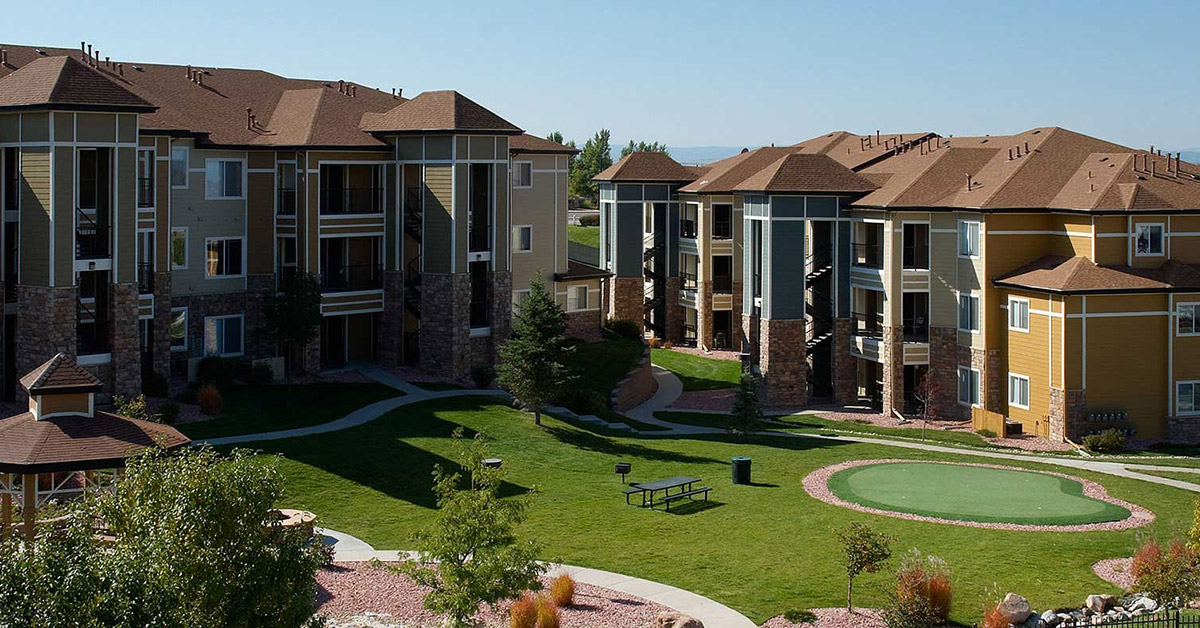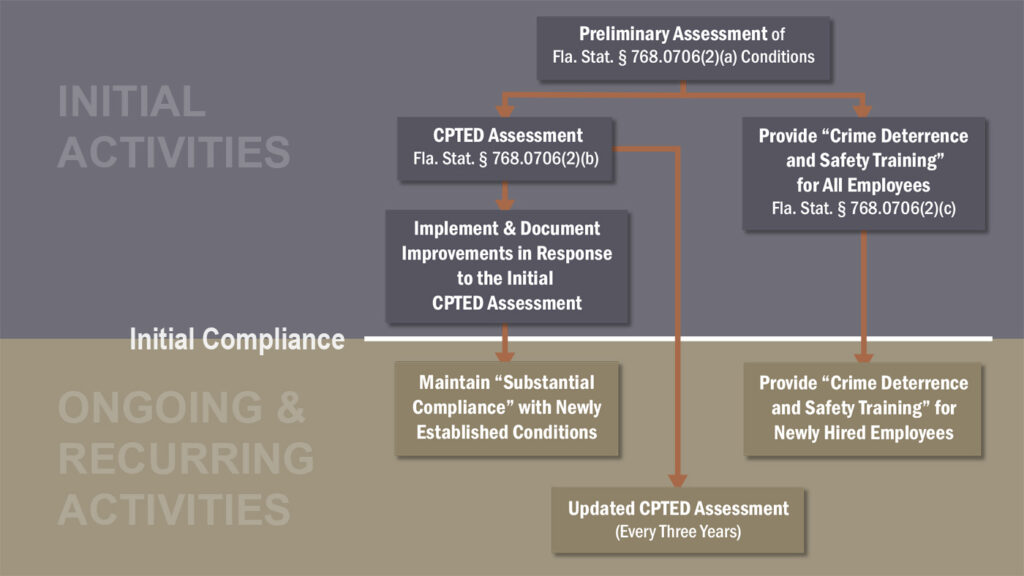
Florida House Bill 837 (HB 837) and Apartment and Multifamily Properties: Walk, Don’t Run
Florida House Bill 837 (HB 837) aims to reduce liability risks for apartment and multifamily housing property owners who implement specific crime prevention measures based on Crime Prevention Through Environmental Design (CPTED) principles and have a documented CPTED assessment. To comply with Florida House Bill 837 and reduce your security and crime-related liability risks, ensure your properties meet the following physical property requirements:
- Install security camera systems at points of entry and exit, with footage maintained for at least 30 days.
- Ensure the parking lot is well-lit with an average intensity of at least 1.8 foot-candles per square foot at 18 inches above the surface, from dusk until dawn or controlled by photocell or similar technology.
- Provide adequate lighting in walkways, laundry rooms, common areas, and porches, with illumination from dusk until dawn or controlled by photocell or similar technology.
- Install at least a 1-inch deadbolt in each dwelling unit door.
- Provide locking devices on all windows, exterior sliding doors, and any other doors not used for community purposes.
- Install locked gates with key or fob access along pool fence areas.
- Place a peephole or door viewer on each dwelling unit door without a window or without a window next to the door.
In addition to these physical measures, property owners must comply with the following procedural requirements:
- Obtain a CPTED assessment completed and documented by a law enforcement agency or a Florida Crime Prevention Through Environmental Design Practitioner (FCP) no more than three years old. F.S. 768.0706(2)(b) further requires that property owners remain in mostly in “substantial compliance” with the assessment.
- Provide proper crime deterrence and safety training to current employees by January 1, 2025. After this date, offer such training to all employees within 60 days of hiring.
Implementing these measures allows you to take advantage of the presumption against liability outlined in F.S. 768.0706(2) and reduce the risk of being held responsible for criminal acts committed by third parties on your property. Always stay informed about any updates or amendments to the bill, and consider consulting a legal professional from CIS to ensure full compliance.
It is highly recommended to conduct a preliminary assessment before the actual CPTED survey. This assessment helps property managers and owners determine the extent of work needed to achieve compliance and establish whether it is realistically possible to become compliant. Beyond the itemized conditions specified in HB 837, Florida Crime Prevention Through Environmental Design assessments encompass a much broader range of issues (e.g., landscaping design and maintenance, illumination in areas other than parking lots, etc.) and property owners will be expected to be in compliance with far more conditions than suggested by the list in F.S. 768.0706(2). Engaging in a documented CPTED assessment without knowing the costs and implications of compliance could lead to increased liabilities and vulnerability to plaintiff attorney complaints if the property fails to meet the required standards.
To minimize potential liability risks, consider the following steps before engaging in a full CPTED assessment:
- Perform a preliminary assessment with a qualified security professional: Review the requirements of HB 837 and evaluate your property’s current security measures against the criteria specified in F.S. 768.0706(2) and common CPTED standards. This will help identify areas that need improvement.
- Consult with a professional: Seek advice from a property management consultant, security expert, or legal professional to discuss your preliminary findings and understand the potential consequences of non-compliance.
- Develop a plan: Based on the self-assessment and expert advice, create a plan outlining the steps, resources, and timeline needed to bring your property into compliance.
- Communicate with stakeholders: Inform your team, residents, and other relevant parties about the planned improvements and their potential impact on property operations and safety.
- Monitor progress: Regularly review the implementation of the plan to ensure that improvements are made according to the established timeline, and adjust the plan as needed.
By taking these steps, you can minimize potential liability risks and be better prepared for a formal CPTED assessment. Keep in mind that achieving compliance is an ongoing process that requires continuous monitoring and improvement. Stay informed about any updates or amendments to HB 837 and collaborate with experts and local authorities to maintain a safe and secure environment for your residents.


